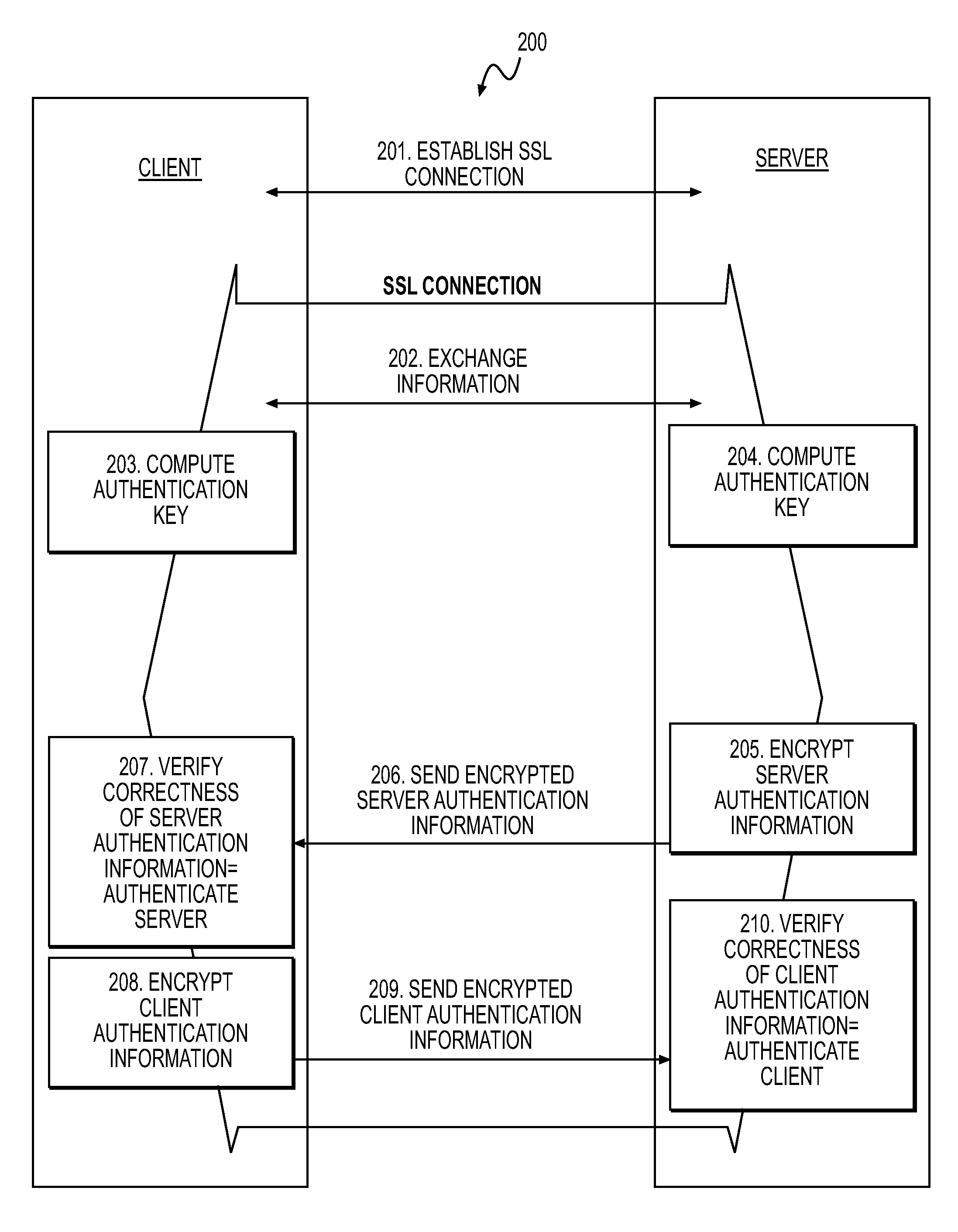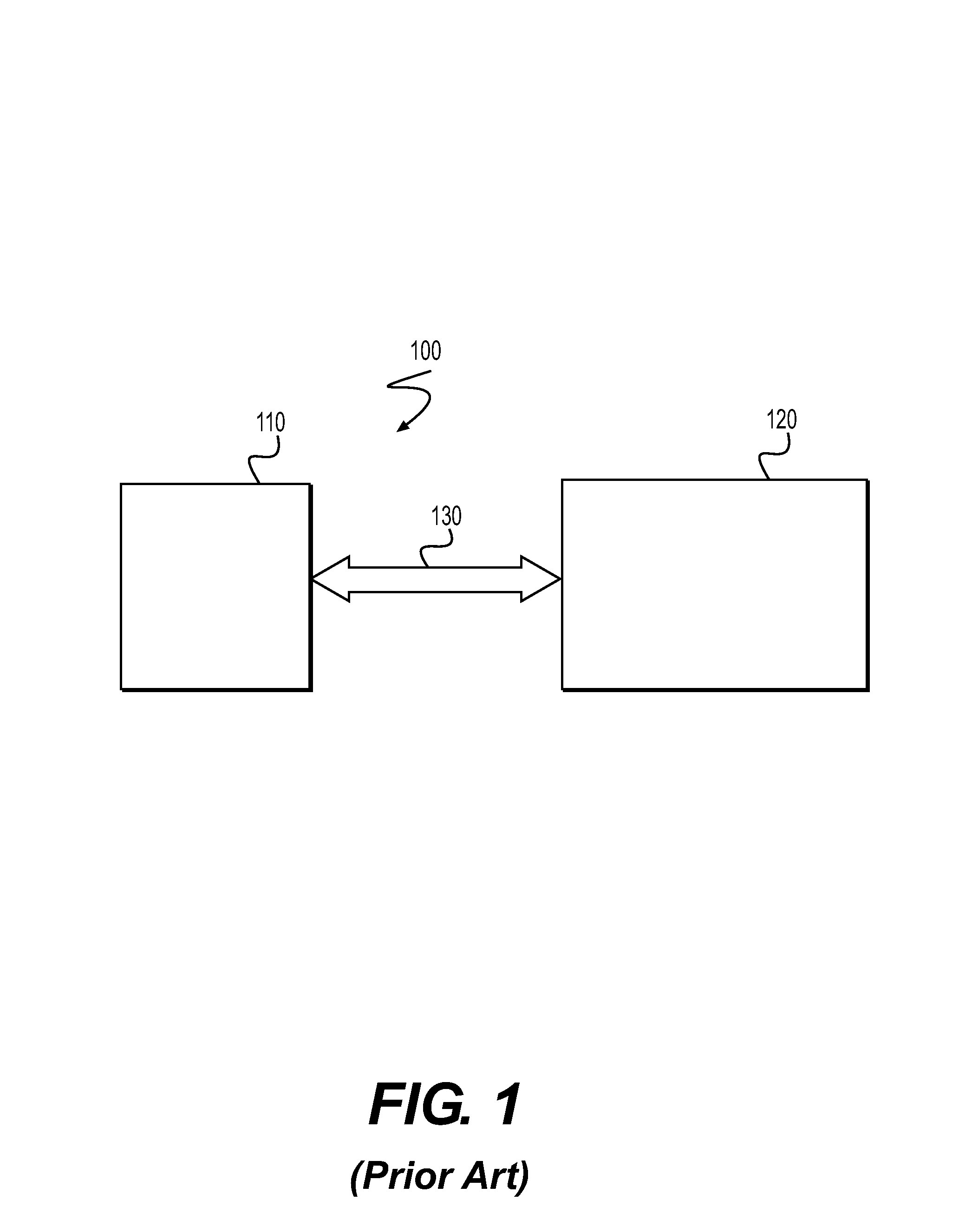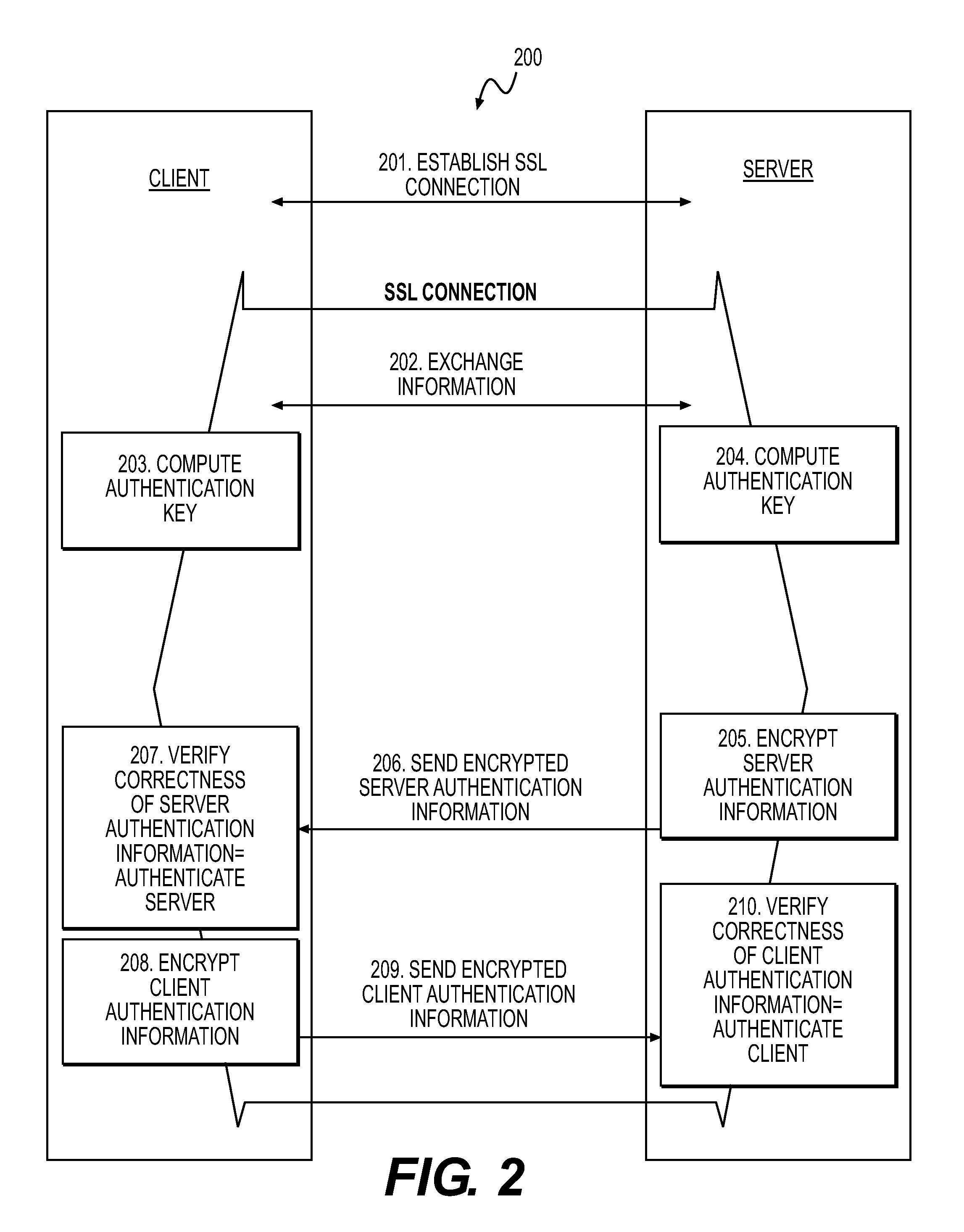Use and generation of a session key in a secure socket layer connection
a secure socket layer and session key technology, applied in the field of secure socket layer connection over a digital public network, can solve the problems of large public knowledge or easy determination of shared secrets, large size of shared secrets (e.g. the number of characters in passwords), and limited cryptographic strength of symmetric encryption keys derived from shared secrets
- Summary
- Abstract
- Description
- Claims
- Application Information
AI Technical Summary
Problems solved by technology
Method used
Image
Examples
Embodiment Construction
[0021]The present invention solves the problems of prior systems by using a secret to verify the link between a public key and a server's identity as claimed in the server's certificate without relying on the trustworthiness of the root certificate of the server's certificate chain. The invention takes the advantages of an SSL type connection without relying on the root certificate needed to verify the server's identity. This is achieved using a symmetric encryption authentication key that the client and server generate independently from each other. The authentication key is used by the server to encrypt the server's public key or certificate that was used to set-up the SSL connection. Thus, the present invention achieves mutual authentication and encryption without depending on the trustworthiness of the server certificate.
[0022]One method for establishing a secure connection between a client and server involves using public key infrastructure (PKI) certificates for the server and...
PUM
 Login to View More
Login to View More Abstract
Description
Claims
Application Information
 Login to View More
Login to View More - R&D
- Intellectual Property
- Life Sciences
- Materials
- Tech Scout
- Unparalleled Data Quality
- Higher Quality Content
- 60% Fewer Hallucinations
Browse by: Latest US Patents, China's latest patents, Technical Efficacy Thesaurus, Application Domain, Technology Topic, Popular Technical Reports.
© 2025 PatSnap. All rights reserved.Legal|Privacy policy|Modern Slavery Act Transparency Statement|Sitemap|About US| Contact US: help@patsnap.com



